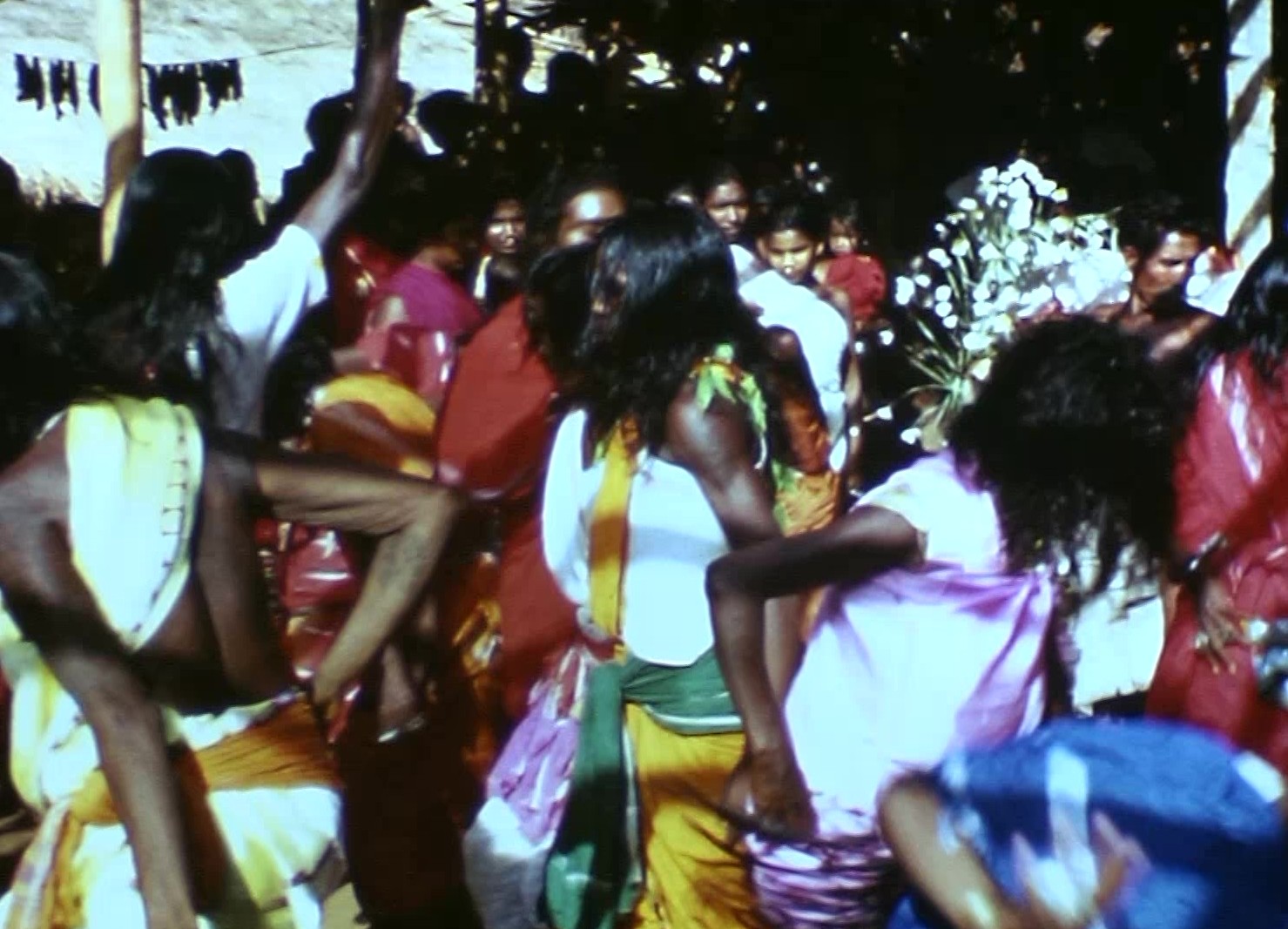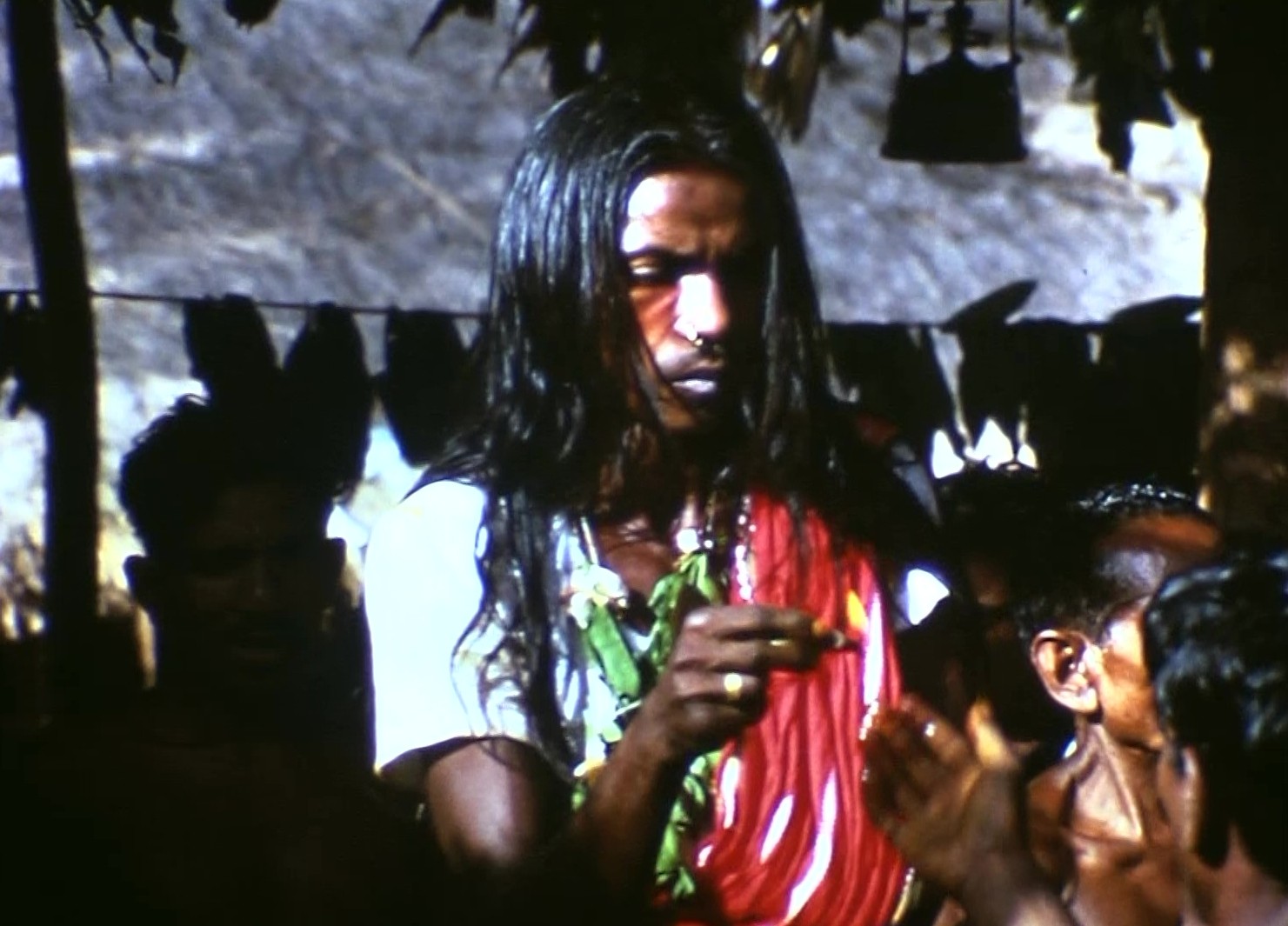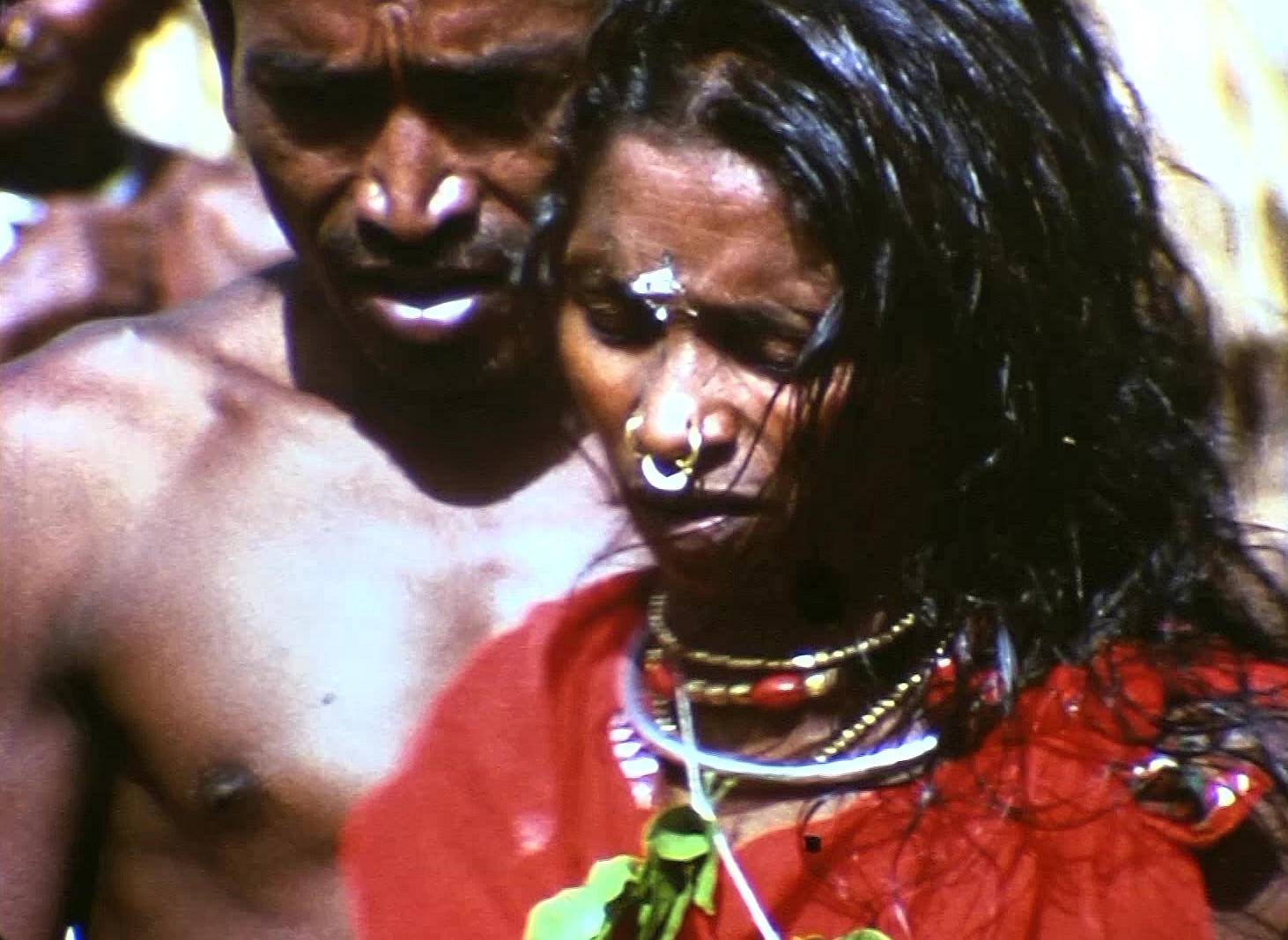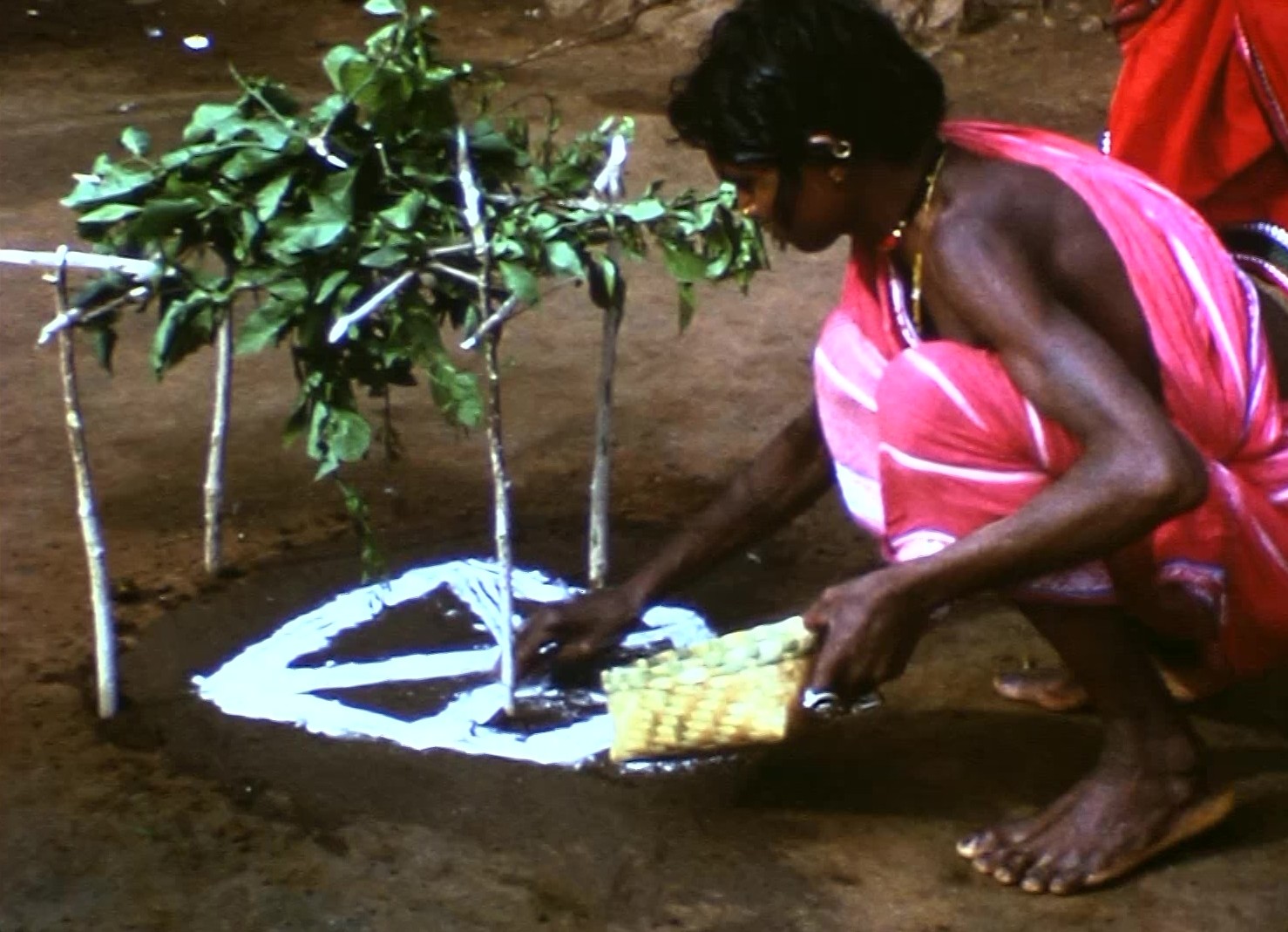FILMS FROM HERMANN SCHLENKER IN THE COLLECTION VISUAL ANTHROPOLOGY
23.11.2021
In 1970, photographer and filmmaker Hermann Schlenker documented the four-day sacrificial Ghanta Parab festival in northern India.
The eye of the camera shifts down the mountainside and comes to rest on a settlement. People are moving around between the thatched buildings. Shouts, bangs and birdsong can be heard from a distance. The next scene shows a river where women and children are washing pots and cloths. With each new shot the people seem to be getting busier: colourful armbands are put on, white and ochre powder is scattered on the ground to create symbols, pots are painted and decorated with flowers, knives are sharpened, roofs are construct-ed. These preparatory scenes gradually seem to turn into a festival with the introduction of brass music and drumming. At the heart of the footage is the trance-like dancing and singing of a group of long-haired people wearing colourful robes. They conduct a sacrificial ceremony in which goats, chickens and a water buffalo are fed, showered with rice, and then slaughtered, accompanied by song and dance.
The film recordings described here were made on a journey to Odisha in northern India that Hermann Schlenker undertook in 1970. It was coincidence, said Schlenker, that he arrived in a hilly village near the town of Koraput just as the inhabitants were about to set up the Ghanta Parab festival. Together with an Indian ethnologist (His name was not transmitted by H. Schlenker.), Schlenker captured the four-day sacrificial festival in photos and on film. The celebrations sought to appease the deities thought to be responsible for smallpox. Both give compelling accounts of the people whose dances, songs and blessings played such a central role in the festivities. While the Indian ethnologist calls them bejuris, or “spirit possessed women” in the recordings, Schlenker designates them as Hijras in his diary.
Hijras are a minority, most of whom live communally in large cities in India and Pakistan. Following a decision on the rights of transgender people, in 2014 they were accorded the status of “third gender” in India. Hijras often define themselves as “neither man nor woman”. In the majority of cases they are assigned male at birth, but later reject this by entering a Hijra community, under-going a penectomy, and adopting an appearance which is read as feminine. There are contradictory views on Hijras in Indian society. Being non-binary is thought to accord them a special relationship to deities, and this is why they are hired as ritual performers at festivals such as Ghanta Parab. Yet Hijras are also subject to structural discrimination with respect to medical provision, education and employment. In pre-colonial India, various gender concepts such as that of the Hijras were recognised in terms of religion and culture, while the precarious living conditions experienced today by Hijras has its roots in the colonial era and the establishment of a normative model based on two genders.
In light of the critical examination of India’s colonial history and the discussion of the status of Hijras as transgender people, Hermann Schlenker’s recordings are more pertinent than ever. Con-ducting research into his films provides an opportunity to explore a multitude of voices on topics such as gender diversity, (post-)colonialism and discrimination.
Now aged 89, the photographer and filmmaker presented this film and over a hundred more to the Weltkulturen Museum in 2020, after get-ting them re-edited, remastered and digitalised. His donation not only supplements and completes the Schlenker collection, but also enhances the scientific research and teaching of visual anthropology at the Weltkulturen Museum.
By Lea Steinkampf
 Film still: Ghanta Parab Festival; Kurli, Koraput (District), Od-isha, India; Hermann Schlenker, 1970; 26:34 min
Film still: Ghanta Parab Festival; Kurli, Koraput (District), Od-isha, India; Hermann Schlenker, 1970; 26:34 min Film still: Ghanta Parab Festival; Kurli, Koraput (District), Od-isha, India; Hermann Schlenker, 1970; 26:34 min
Film still: Ghanta Parab Festival; Kurli, Koraput (District), Od-isha, India; Hermann Schlenker, 1970; 26:34 min Film still: Ghanta Parab Festival; Kurli, Koraput (District), Od-isha, India; Hermann Schlenker, 1970; 26:34 min
Film still: Ghanta Parab Festival; Kurli, Koraput (District), Od-isha, India; Hermann Schlenker, 1970; 26:34 min Film still: Ghanta Parab Festival; Kurli, Koraput (District), Od-isha, India; Hermann Schlenker, 1970; 26:34 min
Film still: Ghanta Parab Festival; Kurli, Koraput (District), Od-isha, India; Hermann Schlenker, 1970; 26:34 min
